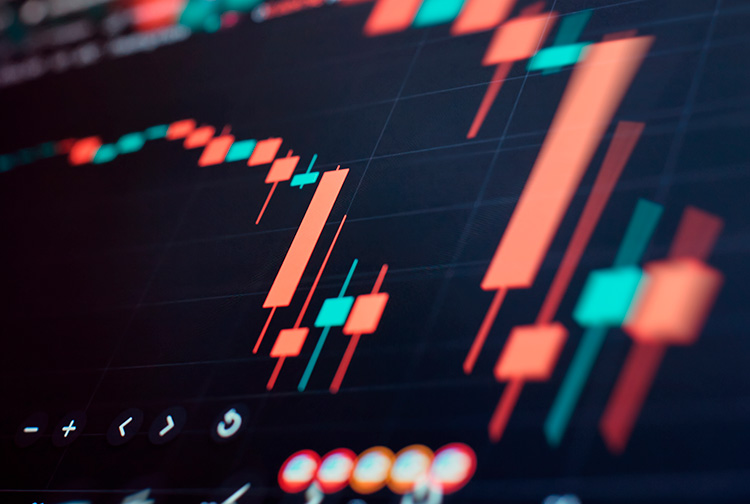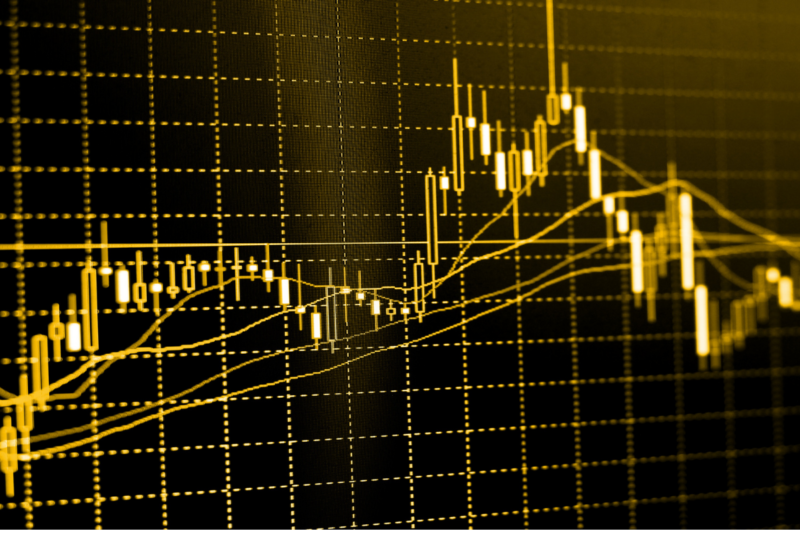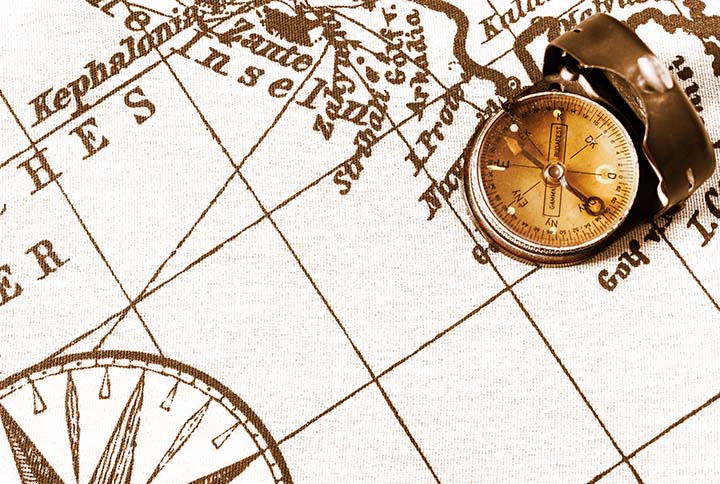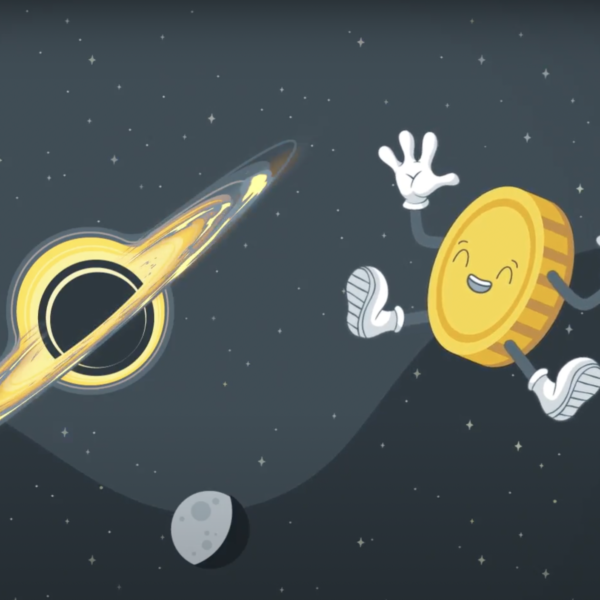Why doesn't China disclose all its gold reserves?
La Xina és el major productor d’or del món i fa anys que compra enormes quantitats d’aquest metall preciós. No obstant això, les xifres oficials de les seves reserves d’or continuen sent absurdament baixes. Quina és la quantitat real de les seves reserves d’or? I per què tant secretisme?
Atès que és la segona economia mundial, la República Popular de la Xina disposa d’enormes reserves de divises. Actualment, és el país del món amb les majors reserves d’or i efectiu -si sumem les dues variables- però la xifra real de les seves reserves del metall daurat és un misteri que preocupa a altres actors globals.
A diferència de molts bancs centrals que comuniquen les seves compres d’or a l’FMI cada trimestre, els bancs centrals de la Xina, Rússia i altres països, compren i emmagatzemen or sense declarar-ho com a reserves. Això explicaria per què la Xina posseeix, almenys segons les dades del World Gold Council (WGC), escasses reserves d’or en relació amb el total de reserves divises.
Per exemple, les reserves de divises de la Xina ascendeixen a 3,20 bilions de dòlars, la xifra més alta de tots els països, i el WGC estima que té 2.113,46 tones d’or en reserves, un 3% del total de les seves reserves. Si ho comparem amb els Estats Units, que acumula un 60% de les seves reserves en or -més de 8.000 tones- o amb la mitjana d’altres països que equival a un 40% i un 50% de les seves reserves, veiem que l’estimació de l’or acumulat per part de la Xina està molt per sota de la quantitat que seria lògic esperar.
La distinció entre or monetari i or no monetari
La mateixa Xina ha admès més d’una vegada que les xifres reals de les seves reserves d’or estan molt per sobre de les dades publicades per WGC, tanmateix, s’ha mantingut en silenci des del 2019. Alguns analistes creuen que el gegant asiàtic podria tenir més de dues vegades les reserves d’or dels Estats Units, mentre que la majoria donen per segur que posseeix almenys el doble de la quantitat d’or declarada oficialment.
Però per poder fer una estimació del volum total real de les reserves d’or de la Xina, primer hem de distingir clarament entre l’or monetari (propietat d’un banc central) i l’or no monetari (propietat del sector privat). Això és important saber-ho perquè la Xina només fa públiques les importacions d’or no monetari.
Sigui importat, extret o reciclat, es calcula que el sector privat Xinès ha acumulat fins a 23.000 tones d’or, que sumat a l’or de l’Estat, podria elevar la quantitat total d’or a la Xina fins a més de 30.000 tones. Una quantitat que sembla fàcilment factible tenint en compte que la Xina és un importador net d’or des dels anys ‘90, tot i que produeix un 15% de l’or mundial que, per tant, es queda en el mercat domèstic.
La militarització del dòlar i del sistema financer global
El control que els Estats Units exerceixen sobre el Fons Monetari Internacional (FMI) i el Banc Mundial (BM), així com el seu poder de decidir quins bancs tenen accés a SWIFT (Society for Worldwide Interbank Financial Telecommunication), sumat a l’hegemonia del dòlar com a moneda de reserva mundial, els hi confereixen un poder de negociació, intimidació i càstig que és sovint utilitzat per interessos econòmics propis i a costa dels interessos d’altres països.
Aquest és un fet que s’ha evidenciat encara més amb les sancions econòmiques contra Rússia arran de la guerra a Ucraïna i la subseqüent apropiació indeguda de la meitat de les seves reserves de divises i d’or a l’estranger, per intentar soscavar l’estabilitat financera del país. Això, però, no és novetat per una Xina que ha estat objecte de les sancions occidentals durant dècades i que, a més, ha de fer front a una creixent guerra comercial instigada pels EUA, que és emmirallada pels seus estats clientelars a Europa i Oceania.
En aquest context, Pequín veu com Washington continua treballant per agreujar les tensions geopolítiques entre la Xina i Taiwan, cosa que augmenta la possibilitat d’un conflicte bèl·lic indirecte amb els EUA, similar al que està fent front Rússia al continent europeu. En tot cas, és un escenari que reafirma la posició tant de Rússia com de la Xina en el seu intent de desdolarització, fomentant l’ús de les seves divises en el comerç bilateral i incrementant de manera continuada les seves tinences d’or.
Davant d’aquests esdeveniments, no és d’estranyar que la Xina, com fan altres països, es decanti per la discreció a l’hora de donar a conèixer la xifra real de les seves reserves. De la mateixa manera, no es pot descartar que aquesta acumulació “furtiva” d’or estigui relacionada amb el llançament d’una moneda digital recolzada pel metall daurat. Una maniobra estratègica que desestabilitzaria el dòlar i posaria en perill la seva hegemonia, al mateix temps que fomentaria la confiança cap a l’associació política i econòmica dels BRICS.
Si vols descobrir la millor opció per protegir els teus estalvis, entra a Preciosos 11Onze. T’ajudarem a comprar al millor preu el valor refugi per excel·lència: l’or físic.
The stock market performance of large US technology companies has been stellar in recent years. These stocks, driven by the new AI paradigm, have posted record profits, yet their end markets are consolidating, calling into question the sustainability of their long-term growth profile.
In the stock market world, Alphabet, Amazon, Apple, Meta, Microsoft, Nvidia and Tesla are known as the “Magnificent Seven” of technology. These companies account for more than 25% of the S&P 500 and more than half of the Nasdaq 100. In addition, five of the seven are part of the exclusive “billion dollar club”, companies with a market capitalisation above $1 trillion, with Nvidia being the most recent entry.
- Alphabet: Google’s parent company’s profits increased by 23% in 2023, with a capitalisation of $1.6 trillion and a cumulative increase of 141% over the past five years.
- Amazon: The e-commerce platform founded in 1994 by Jeff Bezos has a market capitalisation of almost $1.8 trillion and its shares have appreciated by more than 2000% in the last ten years, 200% per year on average.
- Apple: Last year, Apple surpassed $3 trillion in market capitalisation for only the second time in its history and has seen a 250% increase in its stock market performance over the past five years.
- Meta: The company that owns Facebook, Instagram and WhatsApp started 2024 by setting a record, increasing its value by $204.5 billion in one day. It closed 2023 with revenues of $134.902 billion and currently has a capitalisation of $1.3 trillion.
- Microsoft: Last Wednesday, the capitalisation of the corporation founded by Bill Gates and Paul Allen reached the $3 trillion mark for the first time. Microsoft shares have appreciated by 66% in the last twelve months.
- Nvidia: As the leading supplier of chips specifically designed to train and run AI applications, this company’s stock market performance has been spectacular. Nvidia shares are up 243% in the last 12 months and 60% since the beginning of the year.
- Tesla: Elon Musk’s company revolutionised the electric vehicle industry and has significant competitive advantages thanks to its manufacturing processes and software development using artificial intelligence. Although it has started 2024 by losing about a quarter of its market capitalisation, it has seen an 829% increase in market performance over the past five years.
These tech giants not only stand out in terms of market capitalisation, but are leaders in new technologies such as artificial intelligence, cloud computing, and next-generation software development. A common differentiator among these companies is their ability to collect vast amounts of customer data and harness the power of AI.
Will the returns continue to be magnificent?
When analysing the future of the magnificent seven it should be noted that while there are certain similarities in the services provided between Alphabet, Amazon and Microsoft – whether we are talking about AI chatbots, software-to-cloud services or advertising – there are also huge differences between them. These differences are even more evident if we refer to Meta, focused on social networks, Tesla, in electric vehicles, or Apple, regarding smartphones.
It is therefore a heterogeneous group that is united by the common denominator of a solid business approach and growing areas. That said, some market analysts believe that the spectacular stock market performances of the Magnificent Seven are numbered. In a note entitled “R.I.P. the era of the Magnificent Seven”, Mike O’Rourke, senior market strategist at Jones Trading, argues that the group’s dominance of the stock market is coming to an end.
Whether we look at the stagnating demand for smartphones and slowing sales of electric cars, or the diversification of AI technologies, their markets are maturing and consolidating. Add in the problems of the Chinese economy, economic sanctions due to geopolitical interests and increased competition, and O’Rourke notes that the Magnificent Seven will continue to be very influential in the market, but that “they will start to cancel each other out in terms of performance, rather than all moving in the same direction”.
11Onze Recommends Bitvavo, cryptocurrency trading made easy, safe and at a good value.
Whatever the future of money, it seems that digital currencies issued by central banks are not getting off the ground. All pilot projects to implement CBDC have either failed or stalled. Governments argue that they are a tool to make our lives easier, while failing to mention that they also increase their ability to track, control and punish citizens.
Blockchain technology has revolutionised the way people interact with money and financial systems. With the advent of cryptocurrencies, new decentralised monetary systems have been created that are not controlled by any government or financial entity. Despite their volatility, the popularity of digital currencies such as bitcoin poses a threat to the traditional financial system, a paradigm shift that shakes the privileged position of governments when it comes to exercising control over citizens through finance.
Against this backdrop, central banks around the world have begun to explore the possibility of issuing central bank-issued digital currencies, known as CBDCs (Central Bank Digital Currency). These currencies would be issued and regulated by a country’s central bank, and their value would be linked to the country’s currency, or in other words, based on trust in the issuing government.
These are similar to stablecoins, a type of cryptocurrency linked to the value of a fiat currency, such as the US dollar. This means that their value does not fluctuate as much as other cryptocurrencies, which makes them more attractive for use in digital payments. But unlike CBDCs, stablecoins are decentralised, i.e. they are not digital currencies issued, regulated and controlled by the central banks of each country.
In defence of CBDCs
Digital currencies issued by central banks could significantly improve the efficiency and security of financial transactions. Transactions with CBDCs would be instantaneous and could reduce payment processing costs for businesses and consumers, which currently belong to the near-universal duopoly of Visa and Mastercard. Moreover, it is no secret that control of these multinationals by the US government poses a threat to the sovereignty of any country not aligned with the geopolitical and economic interests of the American giant.
On the other hand, CBDCs could help reduce the shadow economy, as they would be harder to hide than cash and less anonymous than cryptocurrencies. In particular, full traceability of financial transactions would facilitate the establishment of control mechanisms, which would reduce the risk of fraud.
In addition, they would foster financial inclusion, facilitating easy and secure access to money for unbanked and underbanked populations. Moreover, they could be an alternative to cash in extreme situations, such as disasters where there is no access to cash and when traditional means of payment, such as POS, do not work.
A solution to a non-existent problem?
One might think that, in practical terms, digital central bank currencies have been around for years, because, in fact, most countries already have digital versions of their currency that citizens use daily in banking and commerce. So what are the motivations behind the rush by central banks to implement a new digital currency model of their own?
As we move towards the full implementation of digital money, the freedom to do what we want with our money, anonymously or without state control, is increasingly limited. In this context, cryptocurrencies offer an alternative to the status quo, democratising the creation of currency while diluting the traditional banking monopoly.
This is obviously not to everyone’s liking, especially that of states and financial institutions. Christine Lagarde, president of the European Central Bank, made it clear that she does not like to see a new period of “free banking” thanks to cryptocurrencies, and that CBDCs are necessary to maintain the role of central banks.
An easily controllable monetary system
And this is precisely where the criticism of CBDCs is concentrated, it removes the privacy that we now have with physical money and cryptocurrencies. With the implementation of their digital currencies, governments will have unprecedented control over our money, knowing exactly how we spend it and with the ability to stop payments or confiscate it.
It would be a fully programmable monetary system, so it can also stop payments to certain areas or groups of people. As an example, see how the Canadian government acted in response to the trucker protests during the “freedom convoy”, by blocking the running accounts of more than 200 protest supporters.
Also, by limiting their validity period, providing an incentive for consumption, rather than being limited by a zero interest rate threshold, governments could impose negative rates on digital accounts to control economic growth. The possibilities are endless, especially if they ensure that there is no alternative.
11Onze is the community fintech of Catalonia. Open an account by downloading the super app El Canut for Android or iOS and join the revolution!
There is an increasing consensus in our society that accepts that economic growth must respect sustainability standards, and that debates how to link ecology and economy.
Economic growth, as a pillar of the capitalist system, has often been associated with the urban condition, the growth of cities, and the unrestricted expansion of their metropolitan areas. Both the services and the infrastructure needed are expanding, changing the territory and, in return, leaving aside the natural environment and the consequences of its alteration.
It is now clear that this has caused an ecological emergency, and many consciences have changed. They have now the opinion that the economy cannot forget nature, which is an increasingly accepted idea. It is probably outside the more purely urban fabric that more steps are taken in this direction, driven by the sensitivity of landscape conservation and natural heritage.
Following this goal of protection and appreciation of this heritage, the local world created the Landscape charters. Since 2006, Decree 343 of the Generalitat develops Law 8/2005 for the protection, management, and planning of the landscape, although some counties such as Alt Penedès have already had their own since 2002.
How does economy fits in sustainability?
The promotion of those sectors that are better adapted to nature and territory, such as wine, are one of the most common bets. It is a type of industry that combines agriculture and tourism, bringing benefits to the region in a minimum of two ways and enhancing the landscape. Some studies show that sales increase when the buyer links them to an environment.
Maintaining this sustainability, however, is sometimes not that simple. The first issue is related to tourism, about which we have talked, and the protection of the landscape as an exclusive setting against overcrowding. This can affect, in fact, the comfort and daily life of the inhabitants themselves. Secondly, we could go back to everything that the industry requires, which will eventually give jobs and leave profits in the form of taxes, such as the creation of industrial estates.
A matter of mobility and energy
The infrastructures for mobility and transport and the generation of energy needed to move everything are perhaps the two factors where the economy finds it more difficult to become sustainable. The local world has responded with great caution and concern to the increasingly imminent plans for the creation of wind or photovoltaic parks that, while seeming to lead to the generation of cleaner energy, are thought to clash in full with landscape care.
One of the territory’s arguments is that if urban areas are the big consumers of energy, they should also be impacted by generating them—and proposals have been made, such as covering the roofs of industrial areas with solar panels. However, the paralysis of decisions due to the debate—in Catalonia only a wind turbine has been installed in twelve years—does not stop what others can do, and there are those who consider that opportunities are being missed. Recently, for example, a wind farm project was presented in Aragon to feed our country with renewable energy.
But big cities have more open debates between growing or guaranteeing ecological minimums and, as we have mentioned, transport is a key one. Recently, the proposal to expand El Prat Airport has returned to the forefront, a project that from a business sector is seen as a country project, essential to position Barcelona and Catalonia as an attractive and accessible hub for business, whereas many citizens and groups see it as completely unsustainable, as they call for a much deeper discussion about how and how much we want to grow. Surely the latter is the key to the debate we need to face soon.
If you want to wash your clothes without polluting the planet, 11Onze Recommends Natulim.
The emerging countries that comprise the BRICS group are leading a geopolitical paradigm shift towards a fairer and more equitable global economic balance, as opposed to the dominance of the G7 in an increasingly multipolar world. While there is still a long way to go, the pillars of a new world order are being formed.
The geopolitical tug-of-war of recent years between East and West has revealed a paradigm shift that is becoming increasingly evident. Economic cycles and financial markets are becoming less and less centred on the US-dominated monetary system, giving way to alternatives that are rebalancing the map of global economic power.
In this context, Western hegemony is threatened by increasingly influential coalitions of emerging countries that, through their cooperation and competition, shape the global economic and political order to the detriment of a status quo of power that has hitherto regarded them as second-division players with no say.
Of course, the transition to a new world order will not be easy, nor will it happen overnight. It is a long process full of variables and challenges that, rather than drastically changing the existing international system, aims to reform and complement an outdated economic and geopolitical model that is out of touch with reality.
Xi Jinping, President of the People’s Republic of China, defined the strategy: “China, as a developing country and a member of the Global South, has always shared the same destiny with other developing countries, firmly defended their common interests and pushed to increase the representation and voice of emerging market countries. We need to abandon the Cold War mentality and bloc confrontation, oppose unilateral sanctions and go beyond small hegemonic groupings. No matter how much resistance there is, the BRICS countries, a positive and healthy force, will flourish.”
The voice of emerging markets
The Shanghai Cooperation Organisation (SCO), which addresses regional security issues, and institutions such as the Asian Infrastructure Investment Bank (AIIB), which focuses on economic issues, complement BRICS trade cooperation and are pieces of the same ecosystem designed to offer an alternative to alliances such as the G7.
You don’t have to be a guru of geopolitics to know that economic power decides who gets to call the shots on the global stage. In this sense, the BRICS+ account for 45% of the world’s population, contributing 25% of trade and 31.5% of global GDP.
This is less than the G7’s 43% of global GDP, but the gap will narrow as major BRICS countries, such as India, continue to grow at an above-average rate and as the alliance welcomes more members in the future.
It should be borne in mind that, although the Western bloc has more wealth, the emerging countries have more population and concentrate oil production. With the addition of Saudi Arabia, the United Arab Emirates and Iran, the BRICS more than doubled its members’ share of global oil production to 43 per cent.
Currently, many of the BRICS member countries have higher real GDP growth rates than their G7 counterparts. Moreover, according to Goldman Sachs, they are expected to achieve an average GDP growth rate of between 189% and 205% by 2050, compared to an average G7 growth rate of 50%.
In short, although much work remains to be done, it cannot be denied that the voice of the Global South is becoming louder and clearer on the world’s geopolitical chessboard. Therefore, the reform of institutions and mechanisms that are supposedly multilateral, but have so far favoured the Western geopolitical bloc, seems inevitable in the face of a more balanced distribution of global power.
If you want to discover the best option to protect your savings, enter Preciosos 11Onze. We will help you buy at the best price the safe-haven asset par excellence: physical gold.
You have probably heard of the sharing economy, i.e. all those activities that involve the exchange of goods and services between people. But what exactly characterises this model, and how can it be put into practice in the digital age?
Before the collaborative economy became a trend, its consumption was limited to the closest circle. Everything stayed at home, it was almost on a family scale. However, thanks to the Internet, it is possible to connect with people from all over the world with common interests. The digitalisation of society and the economic crisis have favoured the development of new business models and new forms of consumption.
The collaborative economy has several advantages. Firstly, it allows us to optimise resources, as we can make our products more useful. In addition, it also offers the end consumer greater variety. It is also a good model for making savings, because customers can buy second-hand goods and services at a lower price than the market price. All of this generates an ecosystem based on commitment, solidarity, and the generation of ideas, often from entrepreneurs with new businesses, which generate employment, wealth, and innovation.
On the other hand, it should also be borne in mind that the collaborative economy, being a model between individuals, doesn’t have a legally regulated market and competition is quite unfair. For this reason, it is a sector that gives rise to complaints and protests from the sectors affected, which can leave consumers unprotected.
Collaborative economy, a range of possibilities
Within this collaborative economy model, which is also typically referred to as the “sharing economy”, there are many types, with different functions, varying according to needs and products. There are, for example, collaborative consumption companies, which use digital platforms through which users contact each other to exchange goods or items, such as collaborative transport, collaborative accommodation and collaborative second-hand trade, among others.
There are also open knowledge companies, all those that promote the dissemination of knowledge without legal or administrative barriers. They can be presented on a day-to-day basis through computer platforms to which users with needs come. There is also the collaborative production model, digital interaction networks that promote the dissemination of projects or services of all kinds. The difference with the two previous models is that what is offered is also produced within these platforms.
Finally, there are the crowdfunding initiatives. Microcredits, loans, savings, donations, and financing channels are included in this subgroup, where users contact each other to cover needs in any of these aspects. The best example is crowdfunding platforms, a funding model for those who wish to donate to specific initiatives.
The four characteristics of the model
Despite the heterogeneity of the companies and industries that fall within this model, sharing economy companies can be described by four characteristics:
- They employ information technologies (ICT), available through web-based platforms such as mobile “apps” on internet-enabled devices, to facilitate transactions between two parties.
- They rely on user-based rating systems for quality control, ensuring a level of trust between consumers and service providers that did not exist before.
- They offer flexibility to workers because this team often delivers its services through digital matching platforms.
- The team has its own tools. To the extent that tools and assets are necessary to deliver a service, digital matching companies rely on workers to use their own.
In short, the collaborative economy model can help our companies grow, because it allows consumers to save money, because it is committed to sustainable development, because it promotes a new management of resources, because there is more choice and because, in the end, all of this brings environmental benefits.
11Onze is the community fintech of Catalonia. Open an account by downloading the app El Canut for Android or iOS and join the revolution!
Learning the value of money can be so much more than a game for children. Passing on the values of economy to them can bring them values such as responsibility, collaboration, saving, learning to negotiate, or even entrepreneurship.
Experts recommend starting to talk about private and family financial management from the age of seven, when children can become aware that the ATM does not give money because it is magical, but because adults, with their work, earn it and keep it in the bank.
It is within the family that the first values about money are learned. Today, most children in our society have grown up in a consumerist system that has made them used to having it all, and having it all now. In this sense, the first lesson to be learned is that access to money is limited to one’s own productive capacity. They need to be taught to see the value of living within their limitations, and to be aware from a very young age that knowing how to spend is as important as knowing how to save.
Children and teenagers, the great consumers
Montse Junyent, educated in business management and administration, advises passing on to children “the value of money, which is hard to earn and must be used ethically“. Show them, from an early age, that all the decisions we make have an economic impact, from buying and accumulating toys, to the practice of buying and throwing, food waste, or even the use of plastic bags. Children can understand that one of these bags can end up in the sea and take four hundred and fifty years to disintegrate. Make them aware that the Earth is finite, and we must take responsibility and take care of it through sustainable consumption actions. Adults and children must be consistent with this idea and act responsibly in all areas, in our relationship with people, with the environment, with the world, or with our way of consuming.
Junyent also defends the economy of the common good, with the aim of “contributing to the construction of a more sustainable and fair life system”. She is committed to “transmitting and publicizing sustainable alternative economic models and helping children to grow as committed people, with criteria, information, and a desire to change what they do not like.” That is, to give children all the tools that allow them to be independent and make their own decisions, based on values such as commitment, sustainability, honesty, innovation, and creativity.
Values that can be passed on in many ways, including through games or stories, and that begin in school. Sustainability, for example, is one of the issues of most concern today, and therefore much talked about within the education system. On the other hand, according to Junyent, children are not taught to talk about economics from an ethical and responsible point of view as much as they should.
The value of money through pay
Many parents have doubts about whether to give money to their children. They often wonder when they should start giving their children allowance, and what the ideal amount is.
Allowance can be an important way of teaching children how to manage and value money, a learning that will serve them well in the future. There is no set age to start using money, but it is essential that when they do, they understand its value and the importance of saving.
Some parents associate pay with doing household chores, a view that many questions, arguing that all members of the family should collaborate in this type of activity. Whatever the mentality, the point is that the model of education that the child receives must be coherent. Therefore, it is not a question of whether to pay or not, but to find the perfect formula for learning through values.
Suggesting to children what they should spend their allowance on
As the child gets older, the allowance can be increased, always depending on the use that is made of it. It is important to suggest to children what they should spend it on, taking into account their wishes and the need they have for the product in question. Beyond avoiding the purchase of products that may not benefit them, it is important to establish a fluid conversation, without imposing anything, where we make them see the consequences of each of their purchases. It will also be a good time to show them new forms of consumption, always opting for a sustainable consumption model, which can provide a real benefit and for as long as possible over time, and for them to understand, in short, that money is there to make their lives easier and that using it unconsciously can lead to negative situations.
We usually start this teaching at around five or six years of age, although it can also be beneficial to do so at preschool age. For example, you can show them how picking up their toys can have a reward, whether in the form of a treat or something else, the point is to learn that if our actions have a positive impact, we will be rewarded. And maybe at first it will be through material things, or when we start working it will be through money, but over the years this teaching will mean that the best reward is the one we make for ourselves, based on our own values.
Teaching to save and share
A good way to show the importance of saving can be to divide the money that the child receives, from an early age, into two parts. The first is in the form of a piggy bank that they can keep at home, where they can keep all the money that can be spent, which would be the daily economy. On the other hand, you can have a bank account where you can put money for future savings. In this way, he will create a relationship with money from both perspectives and understand its importance.
Another important learning will be about sharing. Money does not have to be an individual possession, it can also be shared. An idea that may seem controversial socially, as we relate to money from the point of view of possession and, therefore, it individualises it. Educating children in this issue will allow them to experience this relationship from another point of view, with a more collective vision and social responsibility. It is important to show, by example, that money can be a tool to help others, from making donations to the most disadvantaged to shopping in a specific shop where the profits are used for social projects. There are many ways to help, and it is worth instilling this habit in children and young people.
In conclusion, children need to be taught clear lessons about money, and the best way will always be through practice, copying the behaviours they see at home. Therefore, parents should be the example of this learning, teaching them not to buy on impulse, but to plan their goals, both in the short and long term. When the time is right, they can be encouraged to do small paid chores, and if approached from an educational point of view, giving them pay can become a decisive way of teaching children to manage and value money, a lesson that can mark their lives. Finally, and taking into account the weight that the new generations carry for the future, focus on teaching based on the construction of a more sustainable and fairer system of life for all.
Do you want to be the first to receive the latest news about 11Once? Click here to subscribe to our Telegram channel.
The latest eurozone PMIs show worse-than-expected figures and support the case for a rate cut by the ECB in September. The private sector virtually stagnated in July, and the German economy suffered a further contraction in industrial production.
With the stock market meltdown of the last few days behind us, investors are now focused on the final Purchasing Managers’ Indices (PMI) data that several countries start to release later this week and which may signal a recovery of the eurozone economy.
Still, preliminary survey data from S&P Global shows weaker-than-expected numbers, indicating a negative outlook for eurozone manufacturers. On the one hand, the manufacturing PMI declined from 46.1 in June to 45.3 in July. On the other hand, the services PMI fell from 52.8 to 51.9. While the PMI for total activity fell to 50.1 from 50.9 in June.
According to S&P Global, new orders recorded a second consecutive month of decline, while business confidence fell to a six-month low, prompting companies to halt hiring that began earlier in the year. Cyrus de la Rubia, Chief Economist at Hamburg Commercial Bank, noted that “Preliminary PMI survey data point to a near stagnation in the euro area private sector economy in July as the single currency bloc’s economic recovery has continued to fade”.
Eurozone recovery in doubt
There are no signs of the significant recovery in the eurozone that was expected during the second half of the year. The new orders sub-index remained at its lowest level in three months. This has resulted in an acceleration of the decline in output and an increase in job cuts.
As a result, employment in the eurozone experienced its largest decline since December 2023, with job losses continuing for the past 14 months. “This data dampens hopes of a recovery,” Commerzbank analysts said, expressing concern that “this rebound looks set to be later and weaker than expected”.
“The widespread belief that the eurozone recovery would accelerate significantly in the second half of the year has not materialised. At the beginning of the year, it seemed that the sector would recover from the recession, but doubts that emerged in June have been exacerbated by a further downturn in July,” explained de la Rubia.
The German problem
While macroeconomic data released today shows that industrial production in Germany rose by 1.4% compared to the previous month, year-on-year industrial production fell by 4%. At the same time, exports continue to fall, dropping by 3.4% month-on-month in June, compared to a 3.1% month-on-month decline in May.
On the other hand, according to the S&P reading, July’s PMI index was 0.3 points lower than June’s, remaining at 43.2. Therefore, it is clearly below the 50-point threshold, which would signify an increase in economic activity, and also below 44 points, which indicates a contraction in industrial production.
The Hamburg Commercial Bank warns that “this data illustrates a serious problem. The German economy has suffered a further contraction, dragged down by a dramatic decline in industrial production.”
Protect yourself from economic crises with the ultimate safe-haven asset: gold. If you want your savings to keep or increase their value, Gold Patrimony.
When we talk about fairness in business, our legalistic alter ego soon comes out, and we say to ourselves, quite convinced that we comply with each and every law. We believe that by complying with the laws, no further moral assessment is needed whether the laws are right or should be updated. The implementation of justice cannot be left to ethicists or lawyers. We cannot simplify the assessment of what is just by making it concrete that it is legal. Practising ethics requires educating practical judgement.
Relatively recently, a leading jurist commented that if we had to wait to change legality with the permission of those who gain from current laws, slavery would still exist. And nothing could be truer. In fact, in business, laws are an absolute minimum, but justice, and above all, the fact of producing fair results in the distribution of resources, responsibilities, rewards and recognition, seems to go beyond these legal minimums. The task of managing companies includes assessing whether the business systems that allocate tangible or intangible resources are appropriate. This assessment takes it away from compliance with legality, and even more so from neutrality. A decision must be made that goes beyond purely technical considerations, making it necessary to assess the consequences of the decision, and whether these consequences are good for everyone.
The law is not enough, we must go one step further
Using a supposedly neutral technique (or positive law) leads us to overlook the fact that it is not neutral. We pretend that we are using economic science that is supposedly free from any moral evaluations. And we feed it into the technical content of many management programmes. This then ends up being implemented in the company. We think that the (technical) law is enough, and we go further, we delegate the moral aspects to ethical experts. And we justify this with a separation thesis that considers that facts can be observed without assessing them. Any value judgement is dismissed as unscientific, and this is done with arguments along the lines of “we are talking about factual things, we are talking about science, about objective things”. This neutrality with which they want to evaluate decisions is impossible. The separation thesis should be discarded as false rather than useless. The implementation of moral evaluations becomes necessary, and the criteria of justice are a necessary aspect to discriminate criteria to be used in decisions.
Economic laws do not stand alone, like the law of gravity, but are phenomena that act on people, who are willing, motivated and learn for better or worse. Using economic laws that pretend that people are neither motivated, nor willing nor learning, perpetuates the status quo, or makes it worse. Deciding which criteria should prevail when making a decision, discerning between options and being able to foresee the consequences that decisions have on others. The function of business for some economists is only to create profits, the more, the better. But there is no deterministic law that can force this function. In fact, looking at reality, making companies only have the social function of making profits has not taken us very far, and it therefore seems fair to propose others. Making their function one of generating justice and making justice an intermediary for the common good is absolutely necessary. Businesses must find their usefulness and their social function. If they end up focusing on the common good, promoting justice among all stakeholders, they will find many more followers than they do now, and they will perform a better function.
Companies of people for people
Another important factor to take into account, which often goes unnoticed, is that the company is like a community of people that participates in a wider community, where people can develop in it and find meaning, this allows it to bring a wider and more authentic legitimization to business activity and helps to understand the very existence of companies, their meaning. Seeing them as a tool for three to get rich makes little sense, which right now is starting to look very ridiculous to many people. And how can you distinguish companies that contribute to the common good from those that don’t? One simple way is to look at their mission, and above all at implementation: the facts. Actions speak louder than words.
To see if companies say they solve and solve real needs with their products and services (they contribute to a social common good), and to see how they do it, i.e. how they use resources and how they treat people (internal common good), becomes absolutely essential if we want to have a business fabric that also helps to change consciences. The contribution to the common good is what makes companies meaningful and allows them to realize their full potential.
11Onze is the community fintech of Catalonia. Open an account by downloading the app El Canut for Android or iOS and join the revolution!
Catalonia’s wine sector has a turnover of more than 3.2 billion euros and employs almost 10,500 people. This value chain has doubled since 2016, turning it into a global benchmark in wine quality, cultivation, production, and distribution.
Catalonia has a rich winemaking tradition that is reflected in its twelve designations of origin (DO): Alella, Catalunya, Cava, Conca de Barberà, Costers del Segre, Empordá, Montsant, Penedès, Pla de Bages, Priorat, Tarragona and Terra Alta. These territories are recognised both nationally and internationally for the production of quality wines and form part of a wine-growing ecosystem that continues to grow in all its specialities.
This is what can be gleaned from the latest study on the wine value chain in Catalonia, elaborated by the Catalan Government’s Department of Business and Employment through ACCIÓ, the Agency for Business Competitiveness, which analyses the state of health of the Catalan wine and Cava sector.
According to this report, the turnover of this sector has doubled since 2016, when it was last analysed, with 62% more companies turning over €3,267 million a year (an increase of 104%), equivalent to 1.2% of GDP, and employing 10,460 people.
This is a fully consolidated business fabric, where the majority of companies, 81.2%, are more than 10 years old. The document also points out that 95.7% of Catalan companies in this sector are SMEs with a turnover of less than €50m. Alt Penedès, Priorat, Barcelonès, Vallès Occidental and Baix Llobregat are the regions with the highest concentration of businesses related to the wine value chain, with the Barcelona area accounting for 55.6% of the total.
Catalonia, an export benchmark
The report notes that almost half (49.5%) of the companies in the wine sector are exporters and more than a third (35.4%) are regular exporters, making Catalonia the region with the most regular exporters of wine products. Last year alone, exports of wines and caves from the Principality totalled 615 million euros, five times the volume of imports of these products.
Over the last 10 years, Catalan companies have accounted for 21.1% of total Spanish wine and cava exports, consolidating its position as the leading region both in terms of the number of companies doing international business and the volume of business generated. It is also the leading region in terms of regular exporters of wine products, accounting for 30.6% of Spain’s total.
The document also stresses that the Catalan wine sector is a global benchmark in terms of wine quality, cultivation, production, and distribution. In this sense, it highlights the importance of the Vi de Finca Qualificada (VFQ) distinction, which is the highest recognition that a Catalan wine can receive from the Government of Catalonia and a very useful in improving the ranking of these producers in key markets around the world.
11Onze is the community fintech of Catalonia. Open an account by downloading the app El Canut for Android or iOS and join the revolution!
































